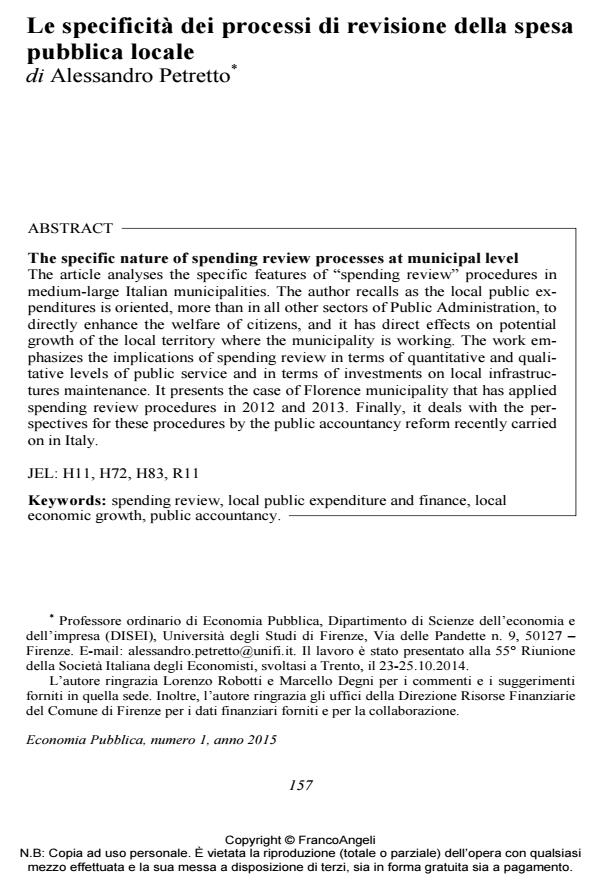The specific nature of spending review processes at municipal level
Journal title ECONOMIA PUBBLICA
Author/s Alessandro Petretto
Publishing Year 2015 Issue 2015/1
Language Italian Pages 19 P. 157-175 File size 198 KB
DOI 10.3280/EP2015-001007
DOI is like a bar code for intellectual property: to have more infomation
click here
Below, you can see the article first page
If you want to buy this article in PDF format, you can do it, following the instructions to buy download credits

FrancoAngeli is member of Publishers International Linking Association, Inc (PILA), a not-for-profit association which run the CrossRef service enabling links to and from online scholarly content.
The article analyses the specific features of "spending review" procedures in medium-large Italian municipalities. The author recalls as the local public expenditures is oriented, more than in all other sectors of Public Administration, to directly enhance the welfare of citizens, and it has direct effects on potential growth of the local territory where the municipality is working. The work emphasizes the implications of spending review in terms of quantitative and qualitative levels of public service and in terms of investments on local infrastructures maintenance. It presents the case of Florence municipality that has applied spending review procedures in 2012 and 2013. Finally, it deals with the perspectives for these procedures by the public accountancy reform recently carried on in Italy.
Keywords: Spending review, local public expenditure and finance, local economic growth, public accountancy
Jel codes: H11, H72, H83, R11
Alessandro Petretto, Le specificità dei processi di revisione della spesa pubblica locale in "ECONOMIA PUBBLICA " 1/2015, pp 157-175, DOI: 10.3280/EP2015-001007